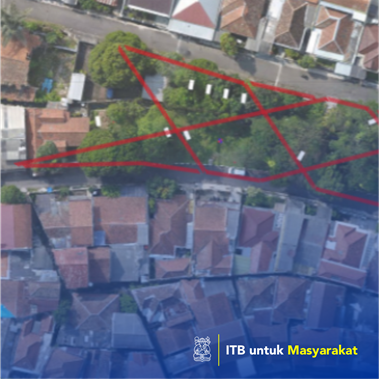

Samsirina
The design of public space has an important role in realizing these long-term goals. This community service scheme with the title of Participatory Design of Settlement Open Space in Bandung has taken place on Kangkung Kaler/Kidul Park, Lingkar Selatan Subdistrict, Lengkong District, in Bandung City. Kangkung Kaler/Kidul Park is a linear park reside in the middle of a residential area in the city of Bandung. The length is around 250 meters with a total area of around 5,600 m2. The location is in the middle of Jl. Kangkung Kaler and Jl. Kangkung Kidul which belongs to the region of Lingkar Selatan Subdistrict- Lengkong District. The location is within the downtown area of Bandung and currently the Lengkong District itself is a sub-district planned to become the Central Tourism District in the City of Bandung. Currently, the park has various trees with wide canopies which are decades old and other plants that are managed individually or by groups of local inhabitants. In the middle of the park, there is a 1.5m wide city drainage flow with a depth of 1.2 m. On the site, several buildings have been built. Some building are already in a very poorly maintained condition, filled with vandalism in the form of graffiti on the wall, or have already collapsed. The conditions of heavy rain, this area has experienced flooding due to overflowing water from the drainage flow in the middle of the park.
Penerapa Karya Seni/Desain/Arsitektur/Perencanaan Wilayah
Public open spaces have various important roles in a residential area. Among them is as the heart where the community states its existence in the form of communication and social interaction as well as facilities to meet healthy physical needs. This role is increasingly needed, especially in dealing with pandemic conditions, namely as a community education facility in building AKB culture (Adaptasi Kebiasaan Baru/New Normal Adaptation). So in responding to this, the strategy for the utilization of public space requires far-sighted thinking, which is not only oriented towards meeting short-term goals but also needs to be reoriented that takes more into account the health factors of the users and the environment.